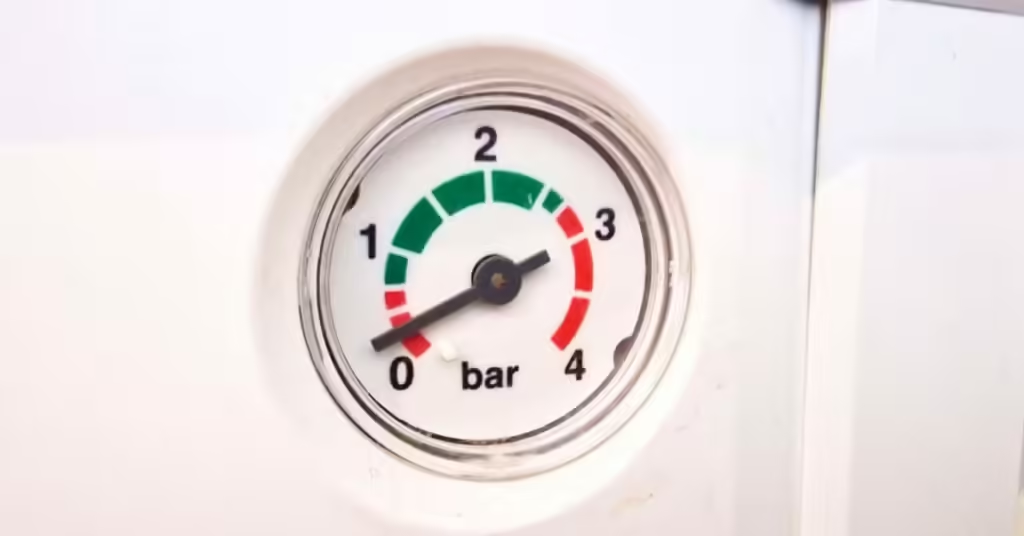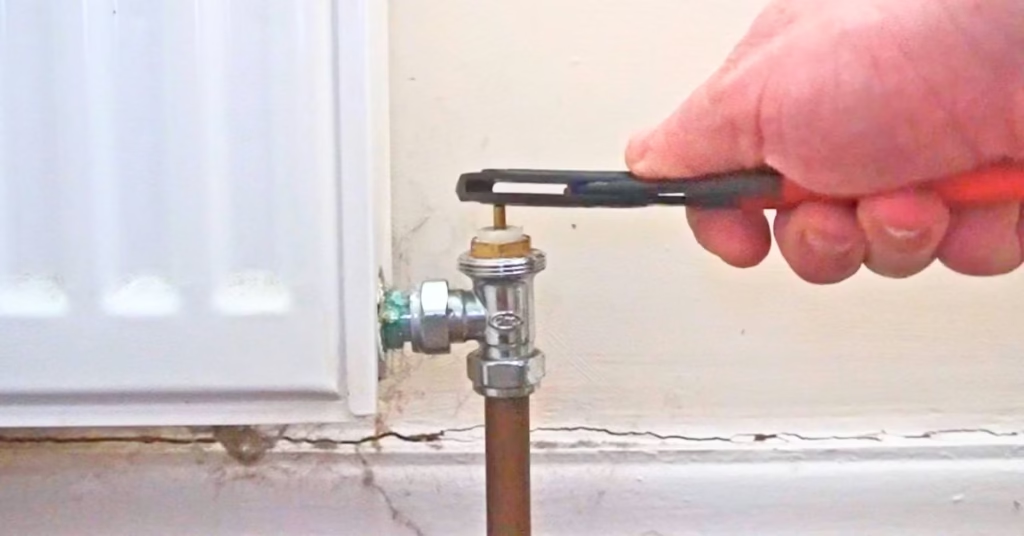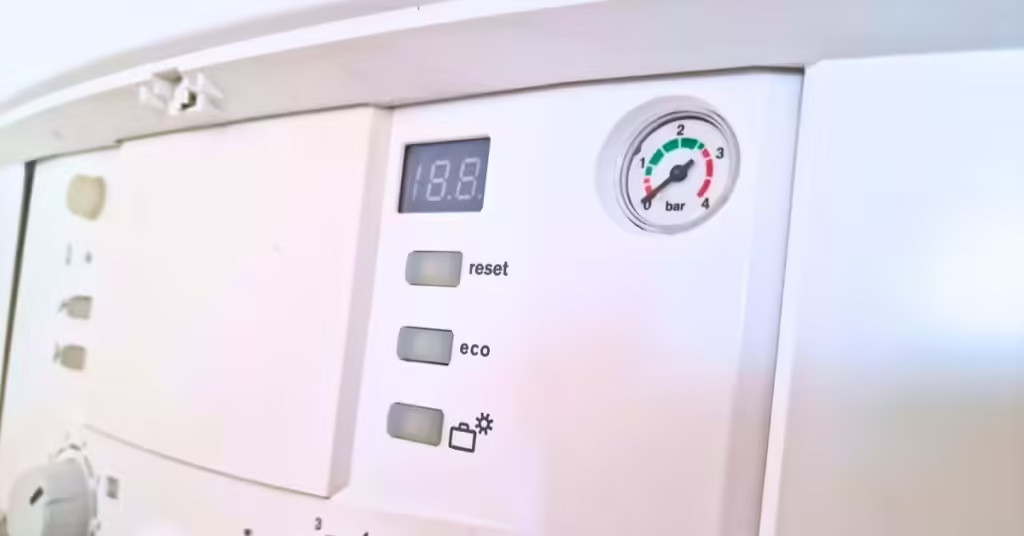Last updated on March 2nd, 2025
Having air in your central heating system can cause a radiator not to heat, cold spots, and can even cause your boiler to stop working. Your central heating system should be full of water at all times if you want it to heat properly and work as efficiently as possible.
I have been a full-time heating engineer for over a decade and have bled and fixed many radiators.
Video guide
Step-by-step guide
You need to find the radiator bleed valve to bleed the air out of a radiator. This will be at the top of the radiator, usually on the right-hand side as most people are right-handed, but it could be on the left or the back of the radiator panel.
It is recommended to bleed radiators when the heating is off and the radiators are cold.
What’s needed:
- A radiator bleed key, screwdriver, or adjustable spanner
- An old towel or cloth
Steps to bleed a radiator:
Step 1: Hold a towel under the bleed valve on the radiator to catch any water
Step 2: Place the radiator bleed key on the bleed valve screw
Step 3: Turn the key anti-clockwise slowly until you hear a hissing sound
Step 4: Keep letting the air out until water starts coming out then close the bleed valve
Step 5: Check the boiler pressure and top it up if it’s below 1 bar
Towel radiator
Bleeding a towel radiator is the same process as a standard radiator. The problem with some towel radiators is sometimes finding the bleed valve can be difficult.
They put them in some strange places but usually, they are on the very top. It might be covered by a cap that needs to be pulled or screwed off first.
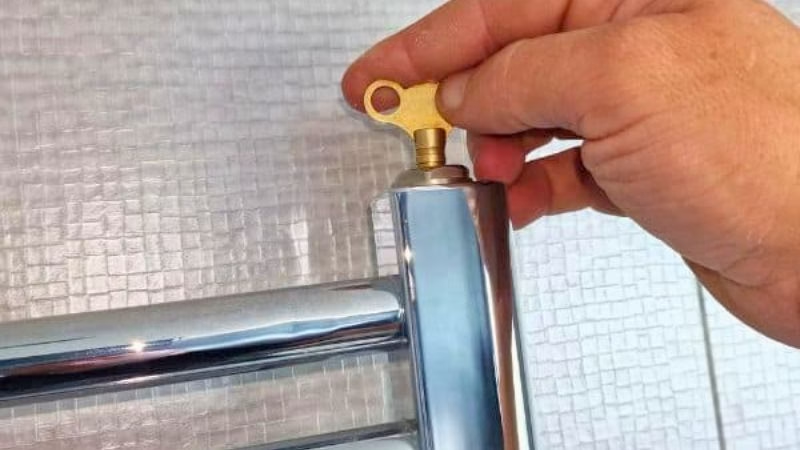
Combi boiler
When bleeding radiators with a combi boiler you will need to repressurise the combi boiler. Every time you bleed trapped air out of a radiator, the pressure of the heating system will drop and you will need to increase the pressure.
A combi boiler boiler will not work if there is not enough pressure in your central heating system.
Bleeding a radiator without a key
Bleeding a radiator without a key can be difficult and sometimes impossible, especially on old radiators. Each situation and radiator is different. I will usually do whatever works for that setup.
Here are some of my ways to bleed a radiator without a key:
- Use a screwdriver
- Unscrew the bleed valve nut
- Grip the bleed screw with water pump pliers
- Use a socket set
Using a screwdriver
Most modern radiators will have a bleed screw with a slot for a flathead screwdriver. Using a screwdriver, you turn the bleed screw anti-clockwise using the screwdriver until you hear an air hissing noise coming out and close it when water starts coming out.
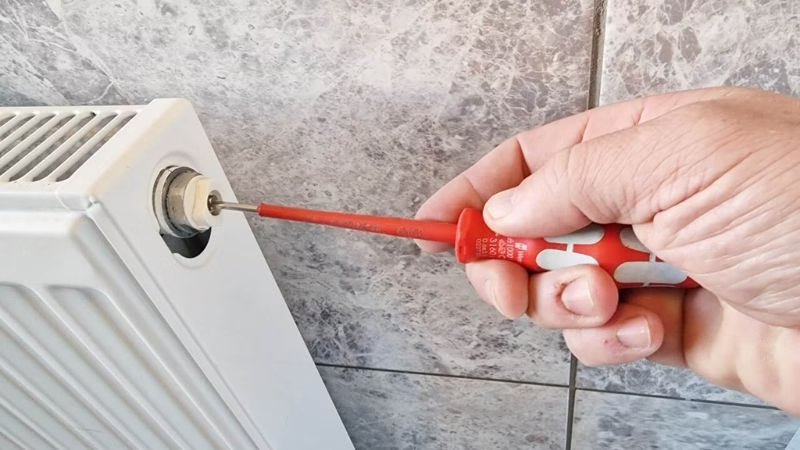
Unscrewing the bleed valve nut
Use an adjustable spanner or water pump pliers to turn the nut that the bleed screw is in. Turn it anti-clockwise slowly until you hear the air coming out, then close it back up when the water starts coming out.
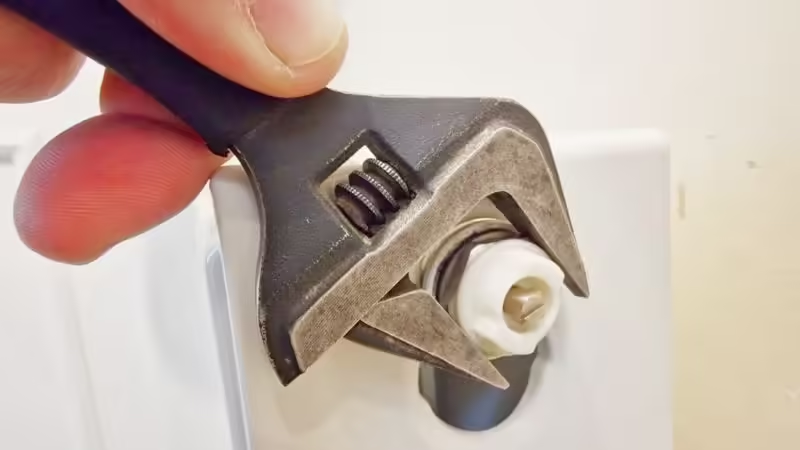
Gripping the bleed screw
Use some small water pump pliers to grip the bleed screw and turn it. You might be able to use some long-nose pliers to grip the bleed screw and then grip the long-nose pliers with some water pump pliers as close to the radiator as possible.

Using a socket set
Use a small socket (usually 6mm) from a socket set and hammer it onto the bleed screw. Then use the ratchet to loosen the screw. The socket should be slightly smaller than the bleed screw head.
Summary
Bleeding air out of a radiator is a simple task that everyone should learn how to do. It can help save money and heat your home properly.
If you have problems with radiators not getting heat or cold patches, the first thing you should do is bleed the radiators, then I would try balancing them.
Feel free to ask me any questions in the comment section below and I’ll try my best to help. Please share this post if you find it helpful.
FAQs
What happens if you bleed a radiator with the heating on?
Nothing happens if you leave the heating on but the hot water could potentially scald you (very unlikely). As a heating engineer, I have to bleed hot radiators when the heating is on regularly. The only problem for me is not having the accurate boiler pressure.
The pressure rises when the heating is on. You might need to top the pressure up when the system has cooled down if the pressure is too low. (below 1 bar)
How do you know if a radiator needs bleeding?
You will know if a radiator needs bleeding if the radiator is cold at the top, but hot at the bottom. This is a sure sign that a radiator needs bleeding. If the radiator isn’t getting hot at all, this could mean it needs bleeding, but it could also mean you need to balance the system or flush the radiator.
Why do I have to keep bleeding my radiators?
If you have to keep bleeding your radiators, that usually means water is leaking from your heating system. This could be from anywhere on your system, including radiators, boiler, or anywhere on the pipework. The most common place I find leaks on central heating systems is on radiator valves.


